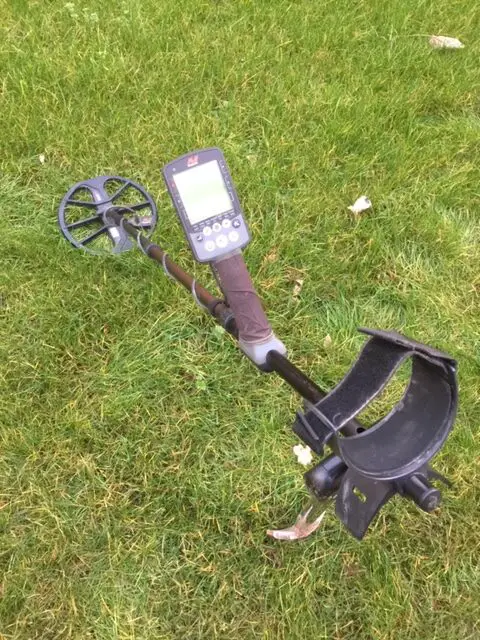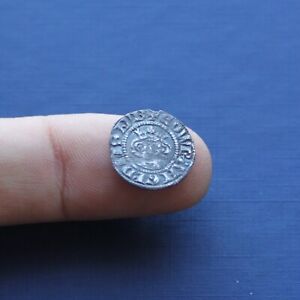How deep can metal detectors detect?
There are many factors that effect how deep a metal detector will detect a target. These include the ground conditions if wet or dry, the amount of mineralisation, the size of the target, the orientation of the target and the frequency the metal detector is using to name a few.
As a general rule, a budget detector will detect to approximately 6 inches, a good mid range detector to about 10-12 inches and a high end hobby detector to about 16 inches.
That being said, how deep do you want your metal detector to detect? After all, the majority of finds are found within the first 8 inches of depth.
I sometimes liken it to Pareto’s 80/20 law if you’ve ever heard of it. You can apply it to most things in life. For example, a business owner may get 80% of his sales from 20% of his customers.
In our case, you can apply it as 80% of finds are found in the first 20% of depth. Ever since metal detector manufacturers have been manufacturing metal detectors, they have used the word “depth” in their advertising as it’s a very emotive thing…..metal detector depth!
They play on FOMO or the Fear Of Missing Out getting you to think that if you don’t get their detector, you’re missing the deeper targets.

It really is a clever sales technique. Most detectorists consider it the their priority when choosing a detector.
Technology changes, new machines get launched but the cycle keeps turning.
However, when you look in magazines or witness finds being found, it’s not always the deepest advertised machine that comes up with the goods.
Ask yourself also….how deep are you willing to dig in order to retrieve a target?
What if I reminded you that the deeper that target is, the probability of the detector knowing what that target is drops off.
Would you dig down 18 inches and be disappointed with a ringpull?…..food for thought indeed. Personally for me, I would prefer to own a detector that gives me rock solid target information to a tidy depth but not necessarily super deep.
It just so happens that the detector I use does exactly that due to its multi frequency technology but we’ll cover that later! (Minelab Equinox 800)

Ultimate Tactical Packs!
Carry everything you’ll need for a detecting day like a First Aid kit, detector spares, finds boxes, batteries, snacks and drinks to rehydrate.
Never forget anything again with a belt pack!
How deep do most detectors go?
As we’ve touched on, there are many factors that can effect how deep a metal detector is willing to go to give you a signal.
It may give you a weak signal at the outer margins of its detecting range but will have no idea if it’s a good or a bad target…..that’s the difference. Let’s look at the factors that are involved.
Target size and orientation
As a targets section size gets smaller, they notoriously get more difficult to detect. This is just a fact because they produce a smaller footprint when they’re energised by the electromagnetic field produced by the metal detector.
(You can read more on this in my article about metal detector discrimination and metal conductivity here.)
In order for a strong signal to be produced, the target needs to present a decent surface area and there is a direct correlation to target size and target strength.
Very often when I started out, I often heard detectorists interpreting weak signals as either a very small shallow target or a bigger target on the margins of the depth capability.

We can also interpret this effect with a moderately sized coin in the ground. When the coin lies flat in the ground, it presents a much larger surface area to pick up. In this orientation, the coin could be much deeper and still be detected.
Now, if that same coin is in the ground but on on its edge, the surface area is much reduced and therefore harder to detect.
This is especially so with thinner sectioned coinage like medieval hammered pennies, cut halves and quarters which detectorists think of as the Holy Grail due to their difficulty to detect.
So, target size, shape and orientation all have a bearing on how deep they can be detected.

The Evolution Pro Cut
The ultimate accessary for the serious metal detectorist. Super strong, stainless steel specially designed spade.
Ground conditions
Ground conditions come in two guises. Firstly, the moisture content of the ground can help or hinder depth. Wet soil is a great help which is why detectorists love getting out after rainfall.
The additional moisture in the ground makes it more conductive for the electromagnetic field around a target which in turn would give a stronger signal on a target than it would in dryer conditions.
The other guise is mineralisation. Even though we get the added bonus in wet conditions as explained above, it also has the same effect on hot rocks, leftover surface coke from industry and any iron mineralisation in the soil.
It basically is just like turning up the volume on everything.
So, in conclusion, prolonged dry conditions and a mineralised soil make up can effect the detecting depth due to having to reduce a detectors sensitivity to keep it stable.
Metal detector frequency

Finally, a metal detectors operating frequency will also have a bearing on the depth capability of a metal detector.
The normal range of operating frequencies for single frequency metal detectors can be from 3 KHz up to about 40 KHz and everything in between.
Lower frequencies penetrate into the ground further than higher frequencies but have different effects on a targets conductivity.
Lower frequencies like bigger targets and higher frequencies like smaller, shallower targets. Lower frequency signals have also been slower to process where as higher frequencies process faster.

So, with single frequency machines, there is always a compromise to make…..do you go low frequency?…..high frequency?……or one in the middle? This can have an effect on detecting depth.
As technology has advanced however, you no longer have to make this compromise with the introduction of multi frequency machines.
These machines open up a whole new world by simultaneously using multiple frequencies from 5 KHz up to 40 KHz so you get depth and sensitivity to all types of targets.
You can read my article on multi frequency VLF machines here. Multi frequency machines can now be had for less than £250 typically with the entry level Minelab Vanquish 340.
Final thoughts
Okay, so we’ve established that manufacturers play on our insecurities and advertise the depth capabilities of their machines to make us think that we don’t want to miss that important target.
In reality, there are many things that effect how deep a metal detector will detect.
As we’ve discussed, these can be size, shape and orientation of a target in the ground, how moist the ground is, the amount of mineralisation and the frequency the detector is using.
It can never be a case of “….this detector will detect a target down to 12 inches!”. There are just too many variables and you don’t know how the manufacturer has tested this to make these claims.
For the best chance of covering all of the bases, the current range of multi frequency machines are the way to go really.
They have really opened up a whole new world for detectorists and old hunting grounds seem to have come alive again due to this technology!…..take care and happy hunting!

Unbeatable Multi Frequency!
You can now get the ultimate power of multi frequency technology over single frequency detectors with the Minelab Vanquish range of detectors.
The entry level Vanquish 340 now gives you ultimate depth, stability and sensitivity on all target types in every soil, including wet beach sand.

































